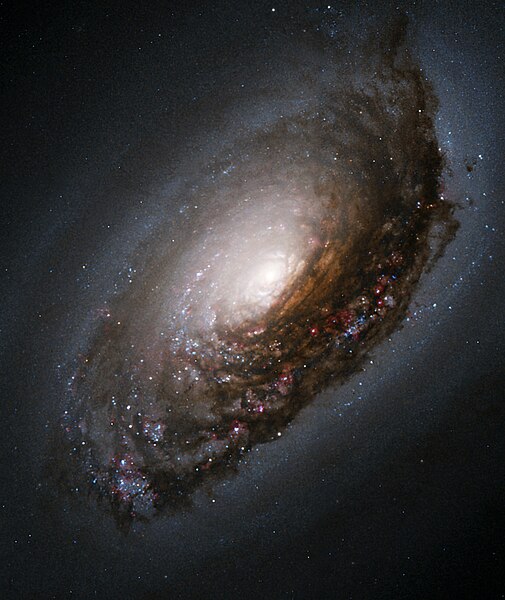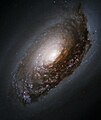Αρχείο:Blackeyegalaxy.jpg

Μέγεθος αυτής της προεπισκόπησης: 505 × 600 εικονοστοιχεία . Άλλες αναλύσεις: 202 × 240 εικονοστοιχεία | 404 × 480 εικονοστοιχεία | 897 × 1.065 εικονοστοιχεία.
Εικόνα σε υψηλότερη ανάλυση (897 × 1.065 εικονοστοιχεία, μέγεθος αρχείου: 774 KB, τύπος MIME: image/jpeg)
Ιστορικό αρχείου
Κλικάρετε σε μια ημερομηνία/ώρα για να δείτε το αρχείο όπως εμφανιζόταν εκείνη τη στιγμή.
| Ώρα/Ημερομ. | Μικρογραφία | Διαστάσεις | Χρήστης | Σχόλια | |
|---|---|---|---|---|---|
| τελευταία | 09:46, 2 Ιουνίου 2005 |  | 897 × 1.065 (774 KB) | CWitte | This image of M64 was taken with Hubble's Wide Field Planetary Camera 2 (WFPC2). The color image is a composite prepared by the Hubble Heritage Team from pictures taken through four different color filters. These filters isolate blue and near-infrared lig |
Συνδέσεις αρχείου
Τα παρακάτω λήμματα συνδέουν σε αυτό το αρχείο:
Καθολική χρήση αρχείου
Τα ακόλουθα άλλα wiki χρησιμοποιούν αυτό το αρχείο:
- Χρήση σε af.wikipedia.org
- Χρήση σε ar.wikipedia.org
- Χρήση σε ast.wikipedia.org
- Χρήση σε az.wikipedia.org
- Χρήση σε be.wikipedia.org
- Χρήση σε bg.wikipedia.org
- Χρήση σε bn.wikipedia.org
- Χρήση σε br.wikipedia.org
- Χρήση σε bs.wikipedia.org
- Χρήση σε ca.wikipedia.org
- Χρήση σε ce.wikipedia.org
- Χρήση σε ckb.wikipedia.org
- Χρήση σε co.wikipedia.org
- Χρήση σε cs.wikipedia.org
- Χρήση σε cy.wikipedia.org
- Χρήση σε de.wikipedia.org
- Χρήση σε diq.wikipedia.org
- Χρήση σε en.wikipedia.org
- Messier object
- Coma Berenices
- List of galaxies
- Portal:Astronomy/Picture/May 2005
- Portal:Astronomy/Picture/12 May 2005
- Portal:Astronomy/Picture/Week 48 2005
- User:ComaDivine
- User:Superfo
- User:Gilgamesh~enwiki/Favorite images
- List of spiral galaxies
- Portal:Solar System
- Portal:Solar System/WikiProjects
- User:Passargea/Favourite pictures/Space
- User:Logos/Hall of Galaxies
- User talk:Example/Archives/2008/April
- User:Mike YuHong Chen
- User:Stefania.deluca/sandbox
- Wikipedia:Userboxes/Science/Astronomy
- Wikipedia talk:WikiProject Userboxes/Ideas/Archive 14
Δείτε περισσότερη καθολική χρήση αυτού του αρχείου.
